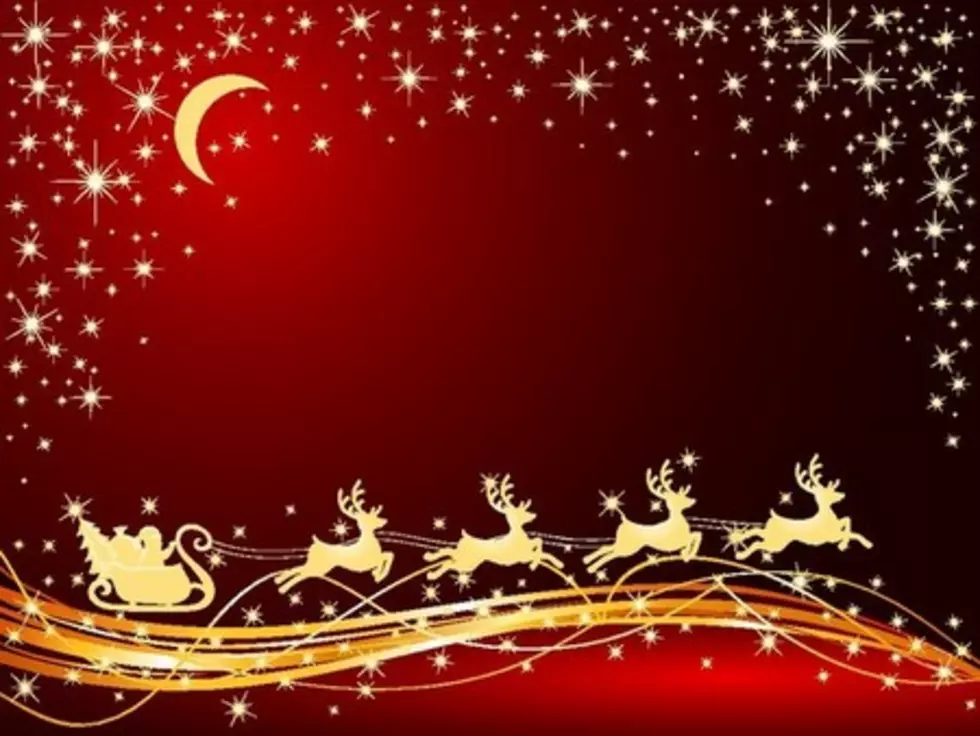
Interesting Facts about Christmas
Here are some very interesting things you may or may not know about our celebration of Christmas. Check it out.
In A.D. 350, Pope Julius I, bishop of Rome, proclaimed December 25 the official celebration date for the birthday of Christ.
Each year more than 3 billion Christmas cards are sent in the U.S. alone.
All the gifts in the Twelve Days of Christmas would equal 364 gifts.
According to the Guinness world records, the tallest Christmas tree ever cut was a 221-foot Douglas fir that was displayed in 1950 at the Northgate Shopping Center in Seattle, Washington.
The traditional three colors of Christmas are green, red, and gold. Green has long been a symbol of life and rebirth, red symbolizes the blood of Christ, and gold represents light as well as wealth and royalty.
Two weeks before Christmas is a popular time for couples to break up
according to data analyzed from Facebook posts. However, Christmas Day is the least favorite day for breakups.
The world’s largest Christmas stocking measured 106 feet and 9 inches (32.56 m) long and 49 feet and 1 inch (14.97 m) wide. It weighed as much as five reindeer and held almost 1,000 presents. It was made by the Children’s Society in London on December 14, 2007.
Christmas trees have been sold in the U.S. since 1850.
The Germans made the first artificial Christmas trees out of dyed goose feathers.
Each year there are approximately 20,000 “rent-a-Santas” across the United States. “Rent-a-Santas” usually undergo seasonal training on how to maintain a jolly attitude under pressure from the public.
In Poland, spiders or spider webs are common Christmas tree decorations because according to legend, a spider wove a blanket for Baby Jesus. In fact, Polish people consider spiders to be symbols of goodness and prosperity.
Ancient peoples, such as the Druids, considered mistletoe sacred because it remains green and bears fruit during the winter when all other plants appear to die. Druids would cut the plant with golden sickles and never let it touch the ground. They thought it had the power to cure infertility and nervous diseases and to ward off evil.
Because they viewed Christmas as a decadent Catholic holiday, the Puritans in America banned all Christmas celebrations from 1659-1681 with a penalty of five shillings for each offense. Some Puritan leaders condemned those who favored Christmas as enemies of the Christian religion.
A Yule log is an enormous log that is typically burned during the Twelve Days of Christmas. Some scholars suggest that the word yule means “revolution” or “wheel,” which symbolizes the cyclical return of the sun. A burning log or its charred remains is said to offer health, fertility, and luck as well as the ability to ward off evil spirits.
The poinsettia is native to Mexico and was cultivated by the Aztecs, who called the plant Cuetlaxochitl (“flower which wilts”). For the Aztecs, the plant’s brilliant red color symbolized purity, and they often used it medicinally to reduce fever. Contrary to popular belief, the poinsettia is not poisonous, but holly berries are.
Santa Claus is based on a fourth-century bishop from modern-day Turkey
Santa Claus is based on a real person, St. Nikolas of Myra (also known as Nikolaos the Wonderworker, Bishop Saint Nicholas of Smyrna, and Nikolaos of Bari), who lived during the fourth century. Born in Patara (in modern-day Turkey), he is the world’s most popular non-Biblical saint, and artists have portrayed him more often than any other saint except Mary.
Early illustrations of St. Nicholas depict him as stern, commanding, and holding a birch rod. He was more a symbol of discipline and punishment than the jolly, overweight Santa children know today.
Christmas stockings allegedly evolved from three sisters who were too poor to afford a marriage dowry and were, therefore, doomed to a life of prostitution. They were saved, however, when the wealthy Bishop Saint Nicholas of Smyrna (the precursor to Santa Claus) crept down their chimney and generously filled their stockings with gold coins.
There are two competing claims as to which president was the first to place a Christmas tree in the White House. Some scholars say President Franklin Pierce did in 1856. Others say President Benjamin Harrison brought in the first tree in 1889. President Coolidge started the White House lighting ceremony in 1923. President Teddy Roosevelt, an environmentalist, banned Christmas trees from the White House in 1901.
It is estimated that the single “White Christmas” by Irving Berlin is the best selling single of all time, with over 100 million sales worldwide.
There are approximately 21,000 Christmas tree farms in the United States. In 2008, nearly 45 million Christmas trees were planted, adding to the existing 400 million trees.
The first lighted Christmas tree can be traced to Martin Luther.
The first person to decorate a Christmas tree was reportedly the Protestant reformer Martin Luther (1483-1546). According to legend, he was so moved by the beauty of the stars shining between the branches of a fir tree, he brought home an evergreen tree and decorated it with candles to share the image with his children.
The first printed reference to a Christmas tree was in 1531 in Germany.
Approximately 30-35 million real (living) Christmas trees are sold each year in the U.S.
The letter “X” in Greek is the first letter of Christ, and “Xmas” has been used as an abbreviation for Christmas since the mid 1500s.
According to the United Nations Children’s Fund (UNICEF), there are 2,106 million children under age 18 in the world. If there are on average 2.5 children per household, Santa would have to make 842 million stops on Christmas Eve, traveling 221 million miles. To reach all 842 million stops, Santa would need to travel between houses in 2/10,000 second, which means he would need to accelerate 12.19 million miles (20.5 billion meters) per second on each stop.
Thanks to the References listed below for their help in compiling this list of information about Christmas. Here's to wishing you all a Very Merry Christmas!
References
a Allen, Linda. 2000. Decking the Halls: The Folklore and Traditions of Christmas Plants. Minocqua, WI: Willow Creek Press.
b “Christmas Trees and More.” University of Illinois Extension. 2010. Accessed: December 6, 2010.
c Collins, Ace. 2003. Stories Behind the Great Traditions of Christmas. Grand Rapids, MI: Zondervan.
d Grossman, John. 2008. Christmas Curiosities: Odd, Dark, and Forgotten Christmas. New York, NY: Stewart, Tabori & Chang
e Guinness Book of World Records. 2008. New York, NY: Bantam Dell.
f Gulevich, Tanya. 2000. Encyclopedia of Christmas. Detroit, MI: Omnigraphics, Inc.
g Highfield, Roger. 1998. The Physics of Christmas: From the Aerodynamics of Reindeer to the Thermodynamics of Turkey. New York, NY: Little, Brown and Company.
h Liebman, Lisa. 2003. Leaving You: The Cultural Meaning of Suicide. Chicago, IL: Ivan R. Dee Publisher.
i Philips, Tom. “Facebook Break-Up Chart Shows That Christmas Is a Relationship Killer.” Metro.co.uk. November 2, 2010. Accessed: November 15, 2010.




